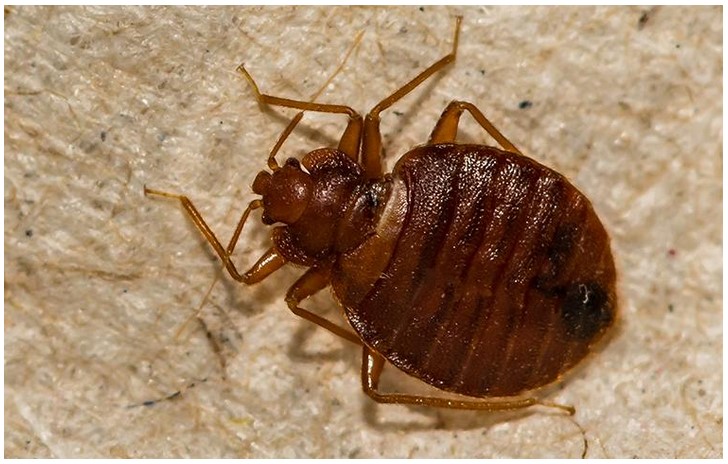
cimex lectularius, commonly known as bed bugs, are small, wingless insects that feed on the blood of humans and other warm-blooded animals. Bed bugs are a growing problem in many parts of the world, and can be difficult to identify and manage. This article will provide an overview of bed bugs, including their biology, behavior, and how to identify and manage them. It will also discuss the potential health risks associated with bed bug infestations. By understanding the biology and behavior of bed bugs, it is possible to take steps to prevent and manage infestations.
How to Identify Cimex Lectularius Infestations: Signs, Symptoms, and Prevention Strategies
cimex lectularius, commonly known as the bed bug, is a small, wingless insect that feeds on the blood of humans and other warm-blooded animals. Bed bug infestations can be difficult to identify and can cause a variety of health problems. It is important to be aware of the signs and symptoms of a bed bug infestation and to take steps to prevent them.
Signs of a bed bug infestation include the presence of live or dead bed bugs, dark spots on mattresses or bedding, and a sweet, musty odor. Bed bugs are small, oval-shaped insects that are reddish-brown in color. They are typically found in the seams and crevices of mattresses, box springs, and other furniture. Bed bugs may also be found in cracks in walls and floors, behind baseboards, and in other dark, secluded areas.
In addition to the physical signs of a bed bug infestation, there are also a variety of symptoms that may be experienced. These include itchy, red welts on the skin, which are caused by the bed bug’s saliva. Other symptoms may include insomnia, anxiety, and anemia due to blood loss.
Preventing a bed bug infestation is the best way to avoid the health risks associated with them. To prevent an infestation, it is important to regularly inspect mattresses, box springs, and other furniture for signs of bed bugs. Vacuuming regularly and using a mattress cover can also help to reduce the risk of an infestation. Additionally, it is important to avoid bringing second-hand furniture into the home, as this can be a source of bed bugs.
In the event of a bed bug infestation, it is important to contact a professional pest control company to treat the problem. Professional pest control companies have the experience and expertise to effectively eliminate bed bugs and prevent future infestations.
By being aware of the signs and symptoms of a bed bug infestation and taking steps to prevent them, it is possible to protect yourself and your family from the health risks associated with these pests.
Understanding the Life Cycle of Cimex Lectularius and How to Effectively Manage Bed Bug Populations
The life cycle of cimex lectularius, commonly known as the bed bug, is a complex process that requires a thorough understanding in order to effectively manage bed bug populations. Bed bugs are small, wingless insects that feed on the blood of humans and other warm-blooded animals. They are typically found in mattresses, bedding, furniture, and other areas where people sleep or rest.
The life cycle of the bed bug begins with the egg stage. Female bed bugs lay eggs in clusters of up to 200, which are usually found in cracks and crevices near the host. The eggs are white and oval-shaped, and measure about 1mm in length. They hatch within a few days, and the newly hatched nymphs are about the size of a pinhead.
The nymphs go through five stages of development, or instars, before reaching adulthood. During each instar, the nymphs must feed on a blood meal in order to molt and progress to the next stage. It takes about five weeks for the nymphs to reach adulthood.
Once the bed bugs reach adulthood, they can reproduce and lay eggs. The adult bed bugs can live for up to 18 months, and can survive for long periods of time without a blood meal.
In order to effectively manage bed bug populations, it is important to understand the life cycle of the bed bug. The most effective way to control bed bugs is to use a combination of chemical and non-chemical methods. Chemical methods include the use of insecticides, while non-chemical methods include vacuuming, steam cleaning, and encasements. It is also important to inspect and monitor for bed bugs on a regular basis, as this will help to identify any potential infestations before they become too large.
By understanding the life cycle of the bed bug and implementing a comprehensive management plan, it is possible to effectively manage bed bug populations and reduce the risk of infestation.
Conclusion
In conclusion, cimex lectularius, or bed bugs, are a common pest that can be found in many homes and businesses. Identifying and managing bed bugs is essential to preventing infestations and ensuring the safety of those living or working in the affected area. Proper identification and management of bed bugs requires knowledge of their biology, behavior, and habits, as well as the use of effective control methods. With the right knowledge and tools, bed bug infestations can be managed and prevented.